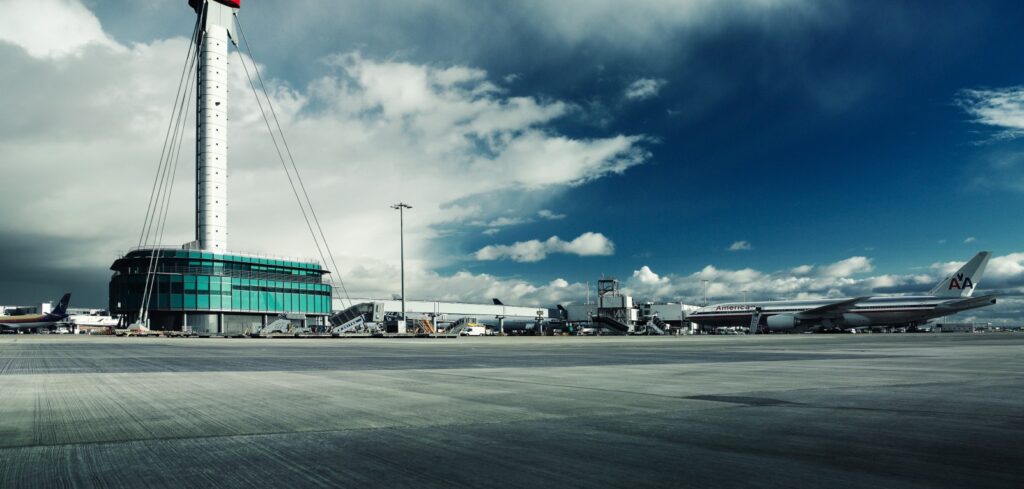London Heathrow Airport has started a trial to explore the viability of lower-carbon concrete, which cuts emissions by 50% compared to conventional concrete.
The project, led by Jacobs and implemented by Cemex and Ecocem, will see four different applications trialled in a pouring site located close to the control tower. These will replicate use in a range of typical airport infrastructure applications, including airfield pavements, encompassing runways and taxiways as well as reinforced pit cover slabs and other ancillary concrete types. With aircraft taking off and landing close to every 45 seconds at Heathrow, it is critical the concrete undergoes rigorous testing to ensure its strength and durability can withstand the pressures of the busy airports.
With at least 6% of global carbon emissions each year linked to concrete production, Ecocem and Cemex’s concrete solution has the potential to radically reduce the carbon output of infrastructure projects at the airport. The aim is for the trial’s findings to be used to set out a blueprint that other airports, keen to reduce carbon from all facets of their operation, can follow.
This trial is the first of a number being planned that will test and trial other low-carbon concrete materials on the market. It is intended that the outcomes of these trials can be used to reduce embedded carbon in a number of projects being delivered by Ferrovial Construction and Dyer & Butler at Heathrow.
The initiative followed Heathrow’s sponsorship of a PhD candidate at the University of Surrey who undertook three years of lab work to reach this point. The trial has been designed to test the concrete’s durability and longevity in a true-to-life airport setting. As part of Heathrow’s holistic sustainability strategy Heathrow 2.0, the airport is committed to reducing on-the-ground emissions as well as those in the air.
Nigel Milton, chief of staff and carbon at Heathrow, said, “Heathrow is once again serving as a testbed for ground-breaking technologies, demonstrating global leadership with regards to sustainable travel. We’re committed to cutting carbon emissions on the ground as well as in the air and we’re delighted to be hosting one of the first airport trials in the world to test lower carbon alternatives. I hope that this trial will help radically transform the built environment at Heathrow in the years to come.”
Richard Moore, Europe aviation engineering lead at Jacobs, said, “Jacobs are delighted to have been the technical consultant on the Low Carbon Concrete initiative at Heathrow since its inception in 2018. Today’s trial is an exciting milestone in the development of lower-carbon infrastructure solutions at the airport. It is the culmination of four years of research and planning towards these initial trials which will form the foundation of further work exploring other lower-carbon products and materials.
“Testing the materials in a range of airport infrastructure applications, not just runway and taxiway pavements, allows us to maximize the opportunity to reduce embedded carbon in a wide variety of concrete types. Building on the success of today, we look forward to upscaling to usage in airfield projects being delivered by Ferrovial Construction, Dyer & Butler and other major program partners across the airport.”
Mark Till, UK national sales manager at Ecocem, said, “Our technical solutions have long helped large-scale infrastructure projects to reduce carbon emissions across Europe. Having the opportunity to partner with Heathrow Airport on a project with huge potential in the UK and for the aviation sector is a testament to the innovation of our products and team. We look forward to working with Heathrow and our other partners to begin this trial.”
Richard Kershaw, technical manager at Cemex, said, “Cemex is renowned across the construction industry for its commitment to providing customers with more sustainable concrete solutions. We were the first supplier in the UK to launch a net-zero concrete product, making us ideally situated to support Heathrow with their lower carbon concrete trial. We hope this trial will prove successful and demonstrate to the aviation sector the opportunities available to cut emissions during their development projects.”
For more key sustainability updates from the passenger terminal industry, click here.

